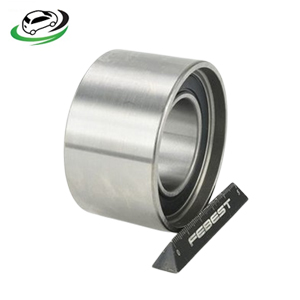-33%
Get Mitsubishi Pajero V75 V98 Rear Axle Differential Bush
The rear axle differential bush, also known as the differential mounting bushing or rear differential bushing, is a component of the vehicle’s suspension system. It plays a crucial role in supporting and stabilizing the rear differential, which is responsible for transferring power from the engine to the rear wheels while allowing them to rotate at different speeds during turns.
Construction and Functionality:
- Material Composition:
- Differential bushes are typically made of rubber or polyurethane, which provides both flexibility and durability. These materials can absorb vibrations and shocks while providing support to the differential assembly.
- Mounting Location:
- The differential bush is mounted between the rear differential housing and the vehicle’s chassis or subframe. It acts as a cushion, isolating the differential from the chassis and reducing noise, vibration, and harshness (NVH) transmitted to the vehicle’s cabin.
- Differential Stability:
- The bushing helps maintain the proper alignment and position of the rear differential. It prevents excessive movement or play of the differential assembly, ensuring optimal drivetrain performance and stability.
Benefits;
1. Absorbing Vibrations and Shock:
- Vibration Dampening: The differential bush absorbs and dampens vibrations and shocks transmitted from the road surface and drivetrain components. This helps improve overall ride comfort and reduces noise, vibration, and harshness (NVH) levels inside the vehicle cabin.
2. Reducing Noise:
- Noise Isolation: By isolating the differential from the vehicle chassis, the bushing helps reduce noise transmission, preventing excessive noise from reaching the passenger compartment. This contributes to a quieter and more enjoyable driving experience.
3. Enhancing Stability and Handling:
- Improved Stability: The differential bush ensures proper alignment and positioning of the differential within the axle assembly, enhancing stability and control of the vehicle, especially during cornering and maneuvering.
- Reduced Wheel Hop: A well-functioning differential bush minimizes wheel hop and axle tramp, improving traction and stability under acceleration, particularly during high-performance driving or towing.
4. Extending Drivetrain Component Life:
- Reduced Wear: By providing cushioning and support to the differential assembly, the bushing helps reduce wear and tear on drivetrain components, such as the differential gears, bearings, and seals. This can extend the service life of these critical components and reduce maintenance costs over time.
5. Maintaining Drivetrain Alignment:
- Alignment Stability: The differential bush helps maintain proper alignment of the rear axle and differential assembly, ensuring that power is transmitted efficiently from the engine to the wheels. This promotes consistent performance and prevents premature wear on drivetrain components.
6. Improving Fuel Efficiency:
- Optimized Power Transfer: A properly functioning differential bush ensures efficient power transfer from the engine to the wheels, reducing energy loss and improving fuel efficiency. This is especially important in vehicles with rear-wheel drive configurations.
Signs a car needs a new one;
1. Excessive Noise and Vibration:
- Increased Noise: Worn or damaged rear axle differential bushings can cause increased noise from the rear of the vehicle, especially during acceleration, deceleration, or when driving over bumps or rough roads.
- Vibration: Excessive vibrations felt in the vehicle’s cabin or through the rear axle, particularly at certain speeds or under load, may indicate deteriorating differential bushings.
2. Loose or Unstable Rear End:
- Loose Rear End: A noticeable increase in the amount of play or movement in the rear axle assembly may suggest that the differential bushings are no longer providing adequate support.
- Unstable Handling: Handling characteristics may become compromised, with the vehicle feeling less stable and more prone to swaying or drifting, especially during cornering or sudden maneuvers.
3. Uneven Tire Wear:
- Uneven Tire Wear: Worn rear axle differential bushings can lead to uneven tire wear, particularly on the rear tires. Look for signs of excessive wear on the inner or outer edges of the tire tread.
4. Fluid Leaks:
- Leaking Differential Fluid: Inspect the rear differential for signs of fluid leaks, which may indicate a failing differential bushing. Leaks can occur due to increased movement and stress on the differential housing caused by worn bushings.
5. Visual Inspection:
- Visible Damage or Wear: Inspect the rear axle differential bushings visually for signs of damage, such as cracking, tearing, or deterioration. Pay close attention to the condition of the rubber or polyurethane material surrounding the bushings.
- Shifted or Misaligned Bushings: Misalignment or shifting of the differential bushings may indicate wear or failure, requiring replacement to restore proper alignment and function.
6. Suspension Sag or Sagging Ride Height:
- Uneven Ride Height: A noticeable sagging or uneven ride height in the rear of the vehicle, especially on one side, may indicate a problem with the rear axle differential bushings. This occurs as the bushings lose their ability to support the weight of the differential assembly.
Follow us on Facebook for more parts.



